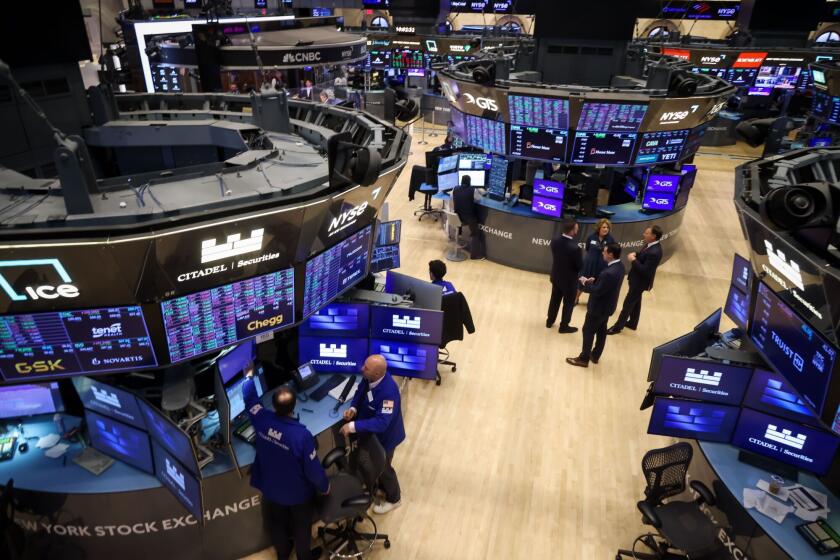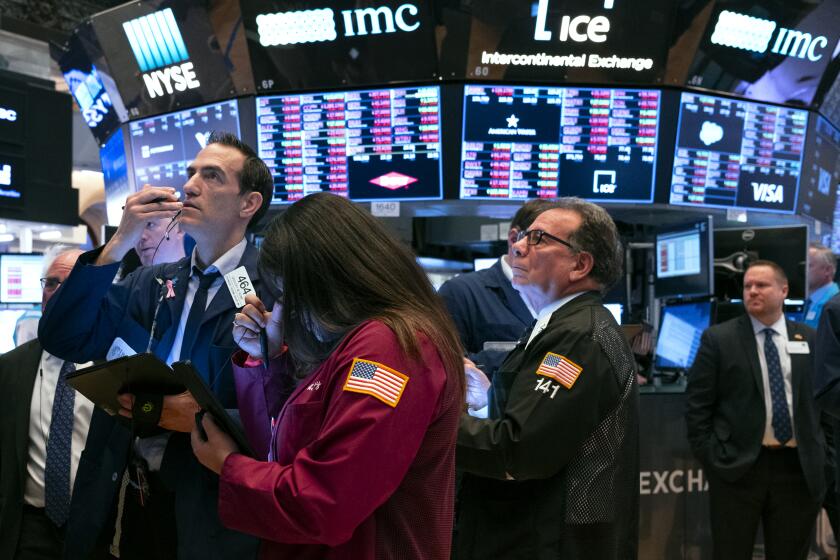AT&T raises DirecTV Now prices, making chumps of those who backed Time Warner merger
- Share via
From the day in 2016 when AT&T announced its $85.4-billion merger with Time Warner, through three years of antitrust wrangling over the deal, the big telecommunications company promised that it would mean lower prices and more choices for consumers.
Now AT&T has a message for everyone who believed the pitch: Suckers!
That’s the best conclusion to be drawn from the company’s recent price increase of $10 a month for its DirecTV Now non-satellite online streaming service. The change, announced to subscribers earlier this month, will raise the monthly fee for the service’s existing packages to as much as $85.
We intend to give customers unmatched choice, quality, value and experiences that will define the future of media and communications.
— AT&T Chairman Randall Stephenson, 2016
New customers can choose from a package of more than 40 channels for $50 a month, or one with more sports programming for $70. That’s a pared-down offering from what’s been available for existing customers, who could choose from five packages of as many as 125 channels. (The company says existing subscribers can keep their packages but will be charged the additional $10 monthly fee.)
Suspiciously, as Variety observes, the new packages are missing some cable channels owned by AT&T competitors such as A+E Networks, AMC Networks, Discovery and Viacom. But they all include HBO, which now is owned by AT&T.
The price increases and service cutbacks mock the representations AT&T made about its merger. We’ve asked AT&T to comment on the yawning chasm between its projections and reality, and will add them if we hear back.
Meanwhile, let’s run through those promises.
In announcing the merger on Oct. 22, 2016, AT&T listed “better value, more choices” among the “significant benefits for customers” resulting from the deal. “We intend to give customers unmatched choice, quality, value and experiences that will define the future of media and communications,” AT&T Chairman Randall Stephenson said in the press release.
After the federal government sued to block the merger, the company got more specific about those consumer benefits. In a May court filing, the company said the merger would allow it to reduce its “profit requirements...which allows it to pass cost reductions on to consumers.”
In the same document, the company said the merger would have a strong incentive “to reduce prices to attract new subscribers.” The evidence from previous vertical mergers — that is, those that combine different functions within an industry rather than those that bring similar companies together — shows that they “substantially reduce rather than increase consumer prices.”
Richard Leon, the federal judge overseeing the federal lawsuit, swallowed this claim hook, line and sinker when he tossed the lawsuit in June. So, too, did a three-judge panel of the federal Court of Appeals for the District of Columbia, which concurred with Leon’s finding that there was “no proof” that the merger would lead to “any price increase to consumers.”
The appellate judges issued their decision on Feb. 26. AT&T announced its price increases less than two weeks later.
The new hikes are the latest in a string of price increases and service cutbacks that have followed the merger announcement and the closing of the deal on June 15. In July, AT&T raised prices for DirecTV Now by $5 a month. That means the price of the service has increased by as much as 43% in less than a year.
Also starting in July, the company jacked up the monthly price of its unlimited data wireless plans to $45. (The plans were introduced in 2015 at $30 a month.) In November, AT&T shut down the FilmStruck streaming service of classic films, following its killing of the 3-year-old digital comedy service Super Deluxe and the Korean-language streaming service DramaFever.
When you put these changes together, you find that under AT&T ownership, its services have become higher-priced since the merger, and consumer choices have been narrowed sharply.
No one should be surprised at that. Mega-mergers in the telecommunications and entertainment sectors always are draped with promises of lower prices, better service, more consumer choice, and greater innovation. Somehow this nirvana never seems to arrive.
As I wrote in June, the model for the AT&T-Time Warner deal was the Comcast-NBCUniversal merger of 2011. The promises of that deal, which united a big internet service provider with a big purveyor of content, included improved cable TV and internet technology, more innovative TV programming, lower prices. The merged company has delivered on none of those promises.
You probably won’t lose money betting that the AT&T merger won’t deliver on its promises, either. As AT&T already has shown, you should get ready for even higher prices and less choice.
Keep up to date with Michael Hiltzik. Follow @hiltzikm on Twitter, see his Facebook page, or email michael.hiltzik@latimes.com.
Return to Michael Hiltzik’s blog.
More to Read
Inside the business of entertainment
The Wide Shot brings you news, analysis and insights on everything from streaming wars to production — and what it all means for the future.
You may occasionally receive promotional content from the Los Angeles Times.











